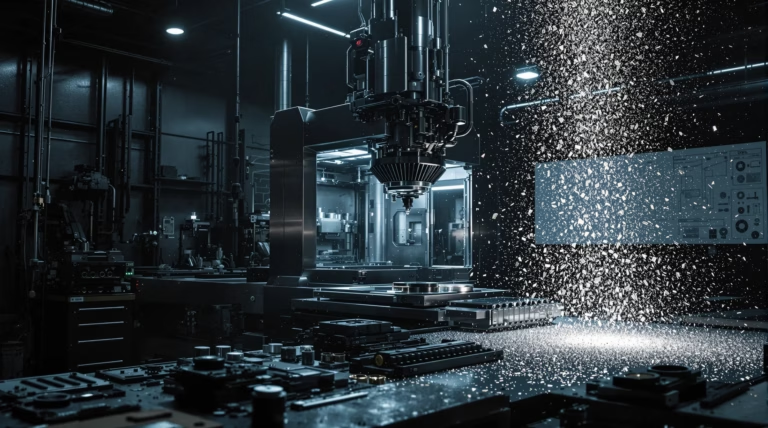Semiconductor Manufacturing: Key Processes and Challenges Explained
Discover the fascinating world of semiconductor manufacturing, where cutting-edge technology meets precision engineering to create the tiny chips that power our digital lives. From smartphones to advanced medical equipment, these microscopic marvels are the backbone of modern electronics.
Understanding Semiconductor Manufacturing
Semiconductor manufacturing represents a sophisticated, multi-stage process that converts raw silicon into powerful microchips. This intricate fabrication combines precision engineering, advanced physics, and cutting-edge chemistry to create integrated circuits containing billions of transistors on a single chip. The manufacturing process involves several critical stages, from initial wafer preparation to final packaging, each requiring extraordinary precision at the nanometer scale.
Since the first integrated circuits emerged in the late 1950s, the industry has undergone remarkable evolution. Today’s semiconductor fabrication facilities (fabs) stand as technological marvels, requiring multi-billion dollar investments in specialized equipment and cleanroom facilities to produce the chips that drive the digital economy.
What is Semiconductor Manufacturing?
Semiconductor manufacturing transforms silicon wafers into integrated circuits (ICs) through a series of precise physico-chemical processes. The process begins with pure single-crystal silicon and involves hundreds of individual steps to create finished microprocessors, memory chips, or other semiconductor devices.
- Photolithography – transfers circuit patterns onto the wafer
- Thermal oxidation – creates insulating layers
- Thin-film deposition – adds conducting and semiconducting materials
- Ion-implantation – modifies electrical properties
- Etching – removes specific materials to create patterns
Importance of Semiconductor Manufacturing
Semiconductors form the foundation of modern digital infrastructure, making their production strategically crucial globally. These components enable functionality in:
- Consumer electronics (smartphones, computers)
- Automotive systems
- Medical devices
- Military equipment
- Industrial automation
- Artificial intelligence systems
- Renewable energy technologies
Key Processes in Semiconductor Manufacturing
The fabrication process follows a sophisticated sequence of operations in ultra-clean environments. Modern semiconductor facilities maintain fewer than 100 particles per cubic meter, compared to millions in ordinary air, while controlling temperature, humidity, and vibration with exceptional precision.
Wafer Production and Preparation
The process begins with creating pure silicon ingots using the Czochralski method, where seed crystals are drawn from molten silicon to form single-crystal cylinders. These undergo several critical steps:
- Precise slicing into thin wafers (0.775mm thick for 300mm wafers)
- Mirror-finish polishing
- Thorough cleaning in Class 1 or Class 10 cleanrooms
- Surface preparation with contamination control
- Quality inspection and verification
The industry’s transition from 200mm to 300mm wafers has increased surface area by 125%, significantly improving production efficiency. Some manufacturers are exploring 450mm wafer processes to further enhance economies of scale, despite the technical challenges involved.
Photolithography Process
Photolithography represents the cornerstone of semiconductor fabrication, enabling precise circuit pattern transfer onto silicon wafers. The process utilizes photoresist – a light-sensitive chemical applied to the wafer surface. Advanced projection systems with extreme ultraviolet (EUV) light sources project reduced circuit pattern images through photomasks onto the photoresist, creating chemical changes that form three-dimensional relief templates.
- Uses 13.5nm wavelength EUV light
- Requires complex mirror systems operating in vacuum
- Enables feature sizes below 7nm
- Single EUV machine costs over $150 million
- Employs laser-produced plasma for short-wavelength light generation
Etching Techniques
| Technique | Characteristics | Applications |
|---|---|---|
| Wet Etching | Uses liquid chemical solutions, high selectivity, isotropic nature | Less advanced nodes, cost-effective processes |
| Dry Etching (RIE/DRIE) | Uses plasma, excellent anisotropic capabilities | Advanced 3D transistor architectures |
| Atomic Layer Etching | Atomic-scale precision, layer-by-layer removal | Cutting-edge semiconductor devices |
Doping Methods
Doping involves introducing impurity atoms into silicon crystals to modify electrical properties. The process creates n-type regions (using phosphorus, arsenic, or antimony) or p-type regions (using boron) essential for transistor formation.
- Ion implantation – primary technique using accelerated ionized dopants
- Solid-source diffusion – high-temperature dopant introduction
- Gas-source diffusion – gaseous compound utilization
- Epitaxial growth doping – dopant incorporation during crystal layer growth
- Post-implantation annealing – crystal damage repair and dopant activation
Semiconductor Testing and Quality Control
Comprehensive testing ensures manufactured chips meet performance and reliability standards through multiple stages:
- Parametric testing – measures electrical characteristics of test structures
- Wafer sort/probe testing – evaluates individual dies while on wafer
- Burn-in testing – accelerates early failures through stress conditions
- Functional testing – verifies logical operations
- Speed grading – sorts by performance capabilities
- Reliability testing – subjects samples to environmental stress
Challenges in Semiconductor Manufacturing
The semiconductor industry faces significant challenges in maintaining productivity and innovation. Modern processes require atomic-level precision at nanometer scales, directly impacting yield rates and manufacturing costs. Geographic concentration presents additional concerns, with the United States accounting for only 10% of global commercial production and lacking domestic manufacturing capabilities for advanced logic and memory chips. The capital-intensive nature of the industry, requiring multi-billion-dollar investments in facilities that may become obsolete within a decade, further complicates production diversification efforts.
Technological Challenges
Semiconductor manufacturers face immense hurdles as they push toward smaller node sizes and more complex architectures. At advanced nodes below 5nm, quantum effects and atomic-level variations significantly impact chip performance and reliability. Extreme ultraviolet (EUV) lithography, while essential for creating ultra-fine features, demands extraordinary precision and adds complexity to manufacturing, with individual machines costing over $150 million.
- Yield management challenges due to increasing transistor densities
- Microscopic defects affecting entire chip sections
- Complex error correction and redundancy requirements
- Heat dissipation issues from dense transistor packaging
- Escalating R&D costs for maintaining competitive capabilities
Supply Chain and Economic Issues
| Challenge Category | Impact |
|---|---|
| Supply Chain Vulnerability | Single-source suppliers for critical components, global interdependencies, potential production disruptions |
| Economic Barriers | $20+ billion cost for state-of-the-art facilities, limited market flexibility |
| Workforce Challenges | Global competition for specialized engineering talent, skill shortages |
| Market Concentration | Industry consolidation, reduced competition, innovation concerns |
Environmental and Regulatory Challenges
The semiconductor industry faces significant environmental impacts through its resource-intensive processes. A typical large facility consumes 2-4 million gallons of ultra-pure water daily, while requiring massive amounts of electricity for precise temperature control and cleanroom operations.
- Extensive water consumption in water-stressed regions
- High energy requirements for facility operations
- Complex chemical management and disposal protocols
- Varying environmental regulations across jurisdictions
- Stringent export controls and technology transfer restrictions
- Intellectual property protection challenges
- Increasing safety and reliability certification requirements
Future of Semiconductor Manufacturing
The semiconductor manufacturing landscape is experiencing a dramatic transformation, with only 10% of global commercial production occurring in the United States. The concentration of 83% of manufacturing capacity in Asian countries (South Korea, Taiwan, China, and Japan) presents significant supply chain vulnerabilities affecting global economic stability and national security.
Technological innovation continues driving the industry forward, exemplified by the evolution from conventional wet etching to sophisticated techniques like reactive ion etching (RIE) and plasma etching. These advancements, combined with strategic investments and policy initiatives, position semiconductor manufacturing to enable transformative technologies across artificial intelligence, quantum computing, renewable energy, and biomedical applications.
Innovations in Semiconductor Technology
Silicon Carbide (SiC) MOSFETs represent a revolutionary advancement in semiconductor technology, delivering exceptional efficiency and reduced losses compared to traditional silicon devices. These wide-bandgap semiconductors excel in high-temperature, high-voltage, and high-frequency operations, making them essential for:
- Electric vehicle power systems
- Renewable energy infrastructure
- Industrial equipment applications
- High-performance computing systems
- Advanced power conversion devices
The evolution from wet etching to advanced dry etching techniques marks another significant milestone. Reactive ion etching (RIE) enables nanometer-scale precision through plasma-based material removal, while specialized plasma etching processes facilitate selective material elimination. These advancements directly address manufacturing efficiency challenges through:
| Technology | Benefits |
|---|---|
| MONOS Process | High-density flash memory, enhanced speed, automotive applications |
| Reactive Ion Etching | Nanometer precision, improved yield, reduced material waste |
| Plasma Etching | Selective material removal, increased efficiency, better control |
Impact of Emerging Markets
The global semiconductor landscape is experiencing a dramatic transformation driven by emerging markets. While traditional manufacturing bases like the United States have seen significant offshoring, new regional manufacturing hubs are rapidly developing, creating a complex ecosystem of opportunities and challenges.
- Shift in manufacturing capacity to emerging economies
- Enhanced production efficiency through 300mm wafer adoption
- Reduced per-unit costs in new facilities
- Increased competition for technological leadership
- Complex supply chain implications
- Intellectual property protection concerns
The transition to larger 300mm wafers has particularly benefited emerging market facilities, which can implement cutting-edge standards without legacy infrastructure constraints. This technological advancement, combined with geographic diversification, is reshaping competitive dynamics and forcing established players to balance efficiency with supply chain resilience.







